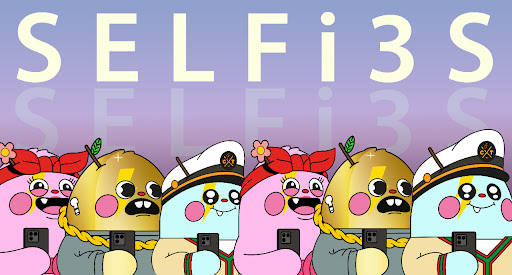The Rise of the SELFi3S™: The Evolution and Disruptive Future of the Selfie
Disclaimer: The text below is a press release that is not part of Cryptonews.com editorial content.

As a form of folk art – or just a way to document a memorable moment – the ‘selfie’ represents the digital age’s self-portrait.
The rise of camera-equipped smartphones and photo-focused social media platforms like Twitter and Instagram propelled the selfie into the spotlight. In fact, at one point the word selfie became the much-coveted ‘Word Of The Year’ from the Oxford English Dictionary.
While many see selfies as a recent trend, and they largely are, thanks to the ease of smartphone photography – the photo style actually has a colorful history.
One of the first known photographic self-portraits dates from 1839 when Robert Cornelius snapped a photo of himself outside his family’s store. Credit for the first known use of the word ‘selfie’ actually predates the iPhone age.
In 2002, An Australian man used the word in an ABC Science Online forum after posting a photo of his post-fall bloody lip. “Sorry about the focus; it was a selfie.”
But the rise of the selfie is much more than just the fruit of better technology. Researchers from St. Petersburg State University argue the popularity of the selfie is
“caused by the convenient visual format of such communicative messages. Firstly, the visual format of the selfie explicates the main trend in the Western values (living a full life, experience strong emotions). Secondly, it allows for the active circulation of selfies on the internet: the visual pattern of photographed self-portraits facilitates reading and spreading those messages on the web.”
The Social Phenomenon Of The Selfie As A Form Of Self Expression
Many social scientists and researchers argue humans are social animals – meaning the selfie functions as a form of social art, a tool to seek approval, and a sort of visual diary to share with family and friends.
Indeed, Dr. Mariann Hardey of the University of Durham argues the selfie is “an extension of how we live and learn about each other.”
While there’s a variety of ways in the digital age for people to share information, stories, and photos with each other, to some, the selfie embodies a particularly unique form of self-expression and empowerment.
Assistant psychology professor Sarah J Gervais wrote how social media platforms “has allowed the public to reclaim photography as a source of empowerment… [it] offers a quiet resistance to the barrage of perfect images that we face each day.”
Selfies as a form of digital self-expression are here to stay. Now the team at Supercute World™ looks to propel ideas about virtual identity and expression to the world of Web3.
Unlocking Your Best Digital Self With SELFi3S™
The Ethereum-based SELFi3S™ NFT collection allows users to craft ideal digital versions of themselves as each SELFi3™ embodies the best representation of the holder’s identity.
The SELFi3™ name itself has a unique foundation. According to the Supercute World™ team, it’s partly a play on the Web2 vs Web3 meme, while the (3) represents the multi-gender versatility and Web3 since users pick the Web3 version of themselves as their PFP.
Holders can change their NFT from day to day across male, female, and gender-neutral versions without affecting the rarity of the exclusive SELFi3™. Each change is blockchain-validated and recorded.
NFT holders can easily change their PFP without changing the NFT itself, ensuring holders can truly show off their preferred identities while maintaining first access to the Supercute World™ of merchandise, animations, family events, and metaverse experiences.
Created by Venezuelan artists Luiz Albornoz and Karen Guevara of Chocotoy, Supercute World™ NFTs embody the creativity and playfulness of kawaii art, manga, and cartoons in colorful, unique, and empowering digital figures.
Learn more about how Supercute World™ and the SELFi3S™ collection is working to help Web3 users create the best virtual version of their identity by visiting their website and following the project on Twitter and Instagram.
Disclaimer: The text above is an advertorial article that is not part of Cryptonews.com editorial content.


